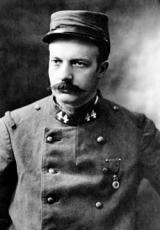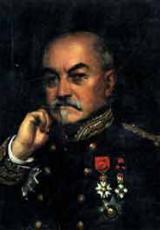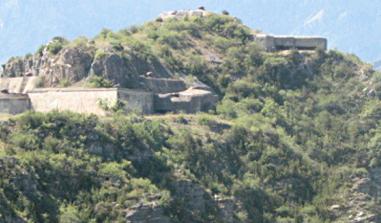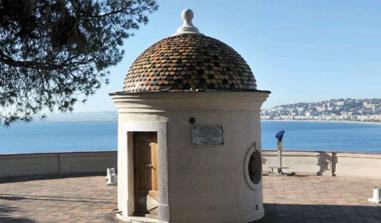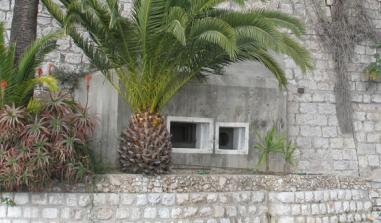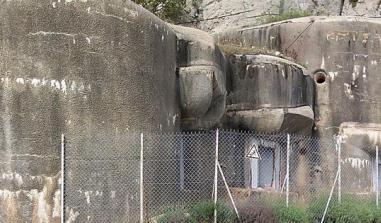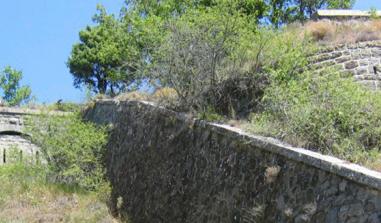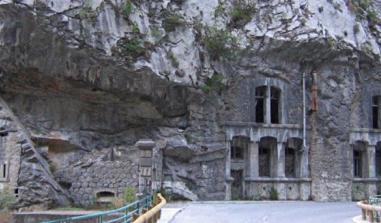Fort du Mont-Ours
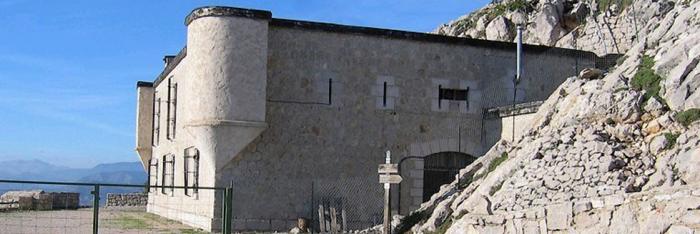
View of the Fort du Mont-Ours. Source : sud passion
Occupying a strategic position, the site of Mont-Ours was included in the "Seré de Rivière" system for controlling the Italian border and then in the Alps Maginot Line.
This small fort was constructed rather belatedly in 1898, to complete Seré de Rivières' "second generation" system. It controlled access to the Col des Banquettes between the Fort du Mont-Agel and the Fort du Barbonnet. It served as their lookout post. Its construction came about during a period of intense Franco-Italian confrontation, marked by Italy's entry into the Triple Alliance in 1882 and the tariff war of 1888-1898.
The small Fort du Mont-Ours belongs to a group of covering fortifications. The defensive organisation in effect consisted of a "holding" or "damning" fortification designed to save on armed forces: it was more powerful and also staggered across the terrain, with two sub-groups of covering fortifications. The first type consisted of blockhouses, high altitude army camps and batteries that could be manned quickly and hold out until reinforcements arrived, whilst the second comprised of blockhouses positioned on the main access routes and provided the link between the forts of the first group.
The construction of this relay building was as a result of a development in military tools. The first factor was technical and saw the improvement in armaments and the manufacture of a more powerful shell with a delayed detonation known as the "torpedo shell", which rendered obsolete Seré de Rivières' heavy defensive system (moats, open air structures etc.). The second was related to the dissolution, in 1888, of the Defence Committee established by Adolphe Thiers. This was succeeded by the Upper War Council, which was more politically involved and decided to limit the allotted funding. Most of the forts on the south east of the line thus remained built in stone, with concrete being used as a priority on the structures on the northern part of the line, which were geographically and militarily more exposed, especially in 1902 when France signed an agreement to neutralise potential Italian aggression. The military leaders preferred to increase the number of relay stations, high altitude stores and forces along the border. That is why the Army of the Alps was set up from 1887 onwards. It would gradually come to permanently occupy the military sites.
The fort consists of a single main building with two floors, with a surrounding wall that overhangs its immediate edges. Below there is a collection of walls sloping beneath a platform designed to support light artillery. A track leads to one of the blockhouses of the Maginot line. The site is currently occupied by the fire service.
The period between the wars was only to strengthen these strategic positions in the face of Mussolini's irredentism. In 1925, General Degoutte, the appointed commander of the Army of the Alps, drew the Upper War Council's attention to this threat. A Committee for the Defence of the Borders was formed. It was presided over by General Guillaumat. The first works on the southeastern Maginot line of the "redoubt programme for the defence of Nice" were started in 1927 under the impetus of General Degoutte. In 1930, funding for the construction of the Maginot line was approved and the execution of the work was assigned to the Committee for Organising the Fortified Regions (Commission d'Organisation des Régions Fortifiées or CORF).
The Committee for the Defence of the Borders suggested 75 forts of several types: "Sturdy" well armed and well equipped structures; intermediary forts of the main line of defence, whose armaments complement the former; artillery forts and, behind the line, "shelters" (3 types) where troops would be accommodated between battles. In April 1934, fortress troops, battalions of detached alpine fortress infantry regiments and alpine fortress battalions were set up. These troops were complemented by artillery and specialist units.
In 1937, in order to contain the Italian threat, the Caval plan hastened the reinforcement of the most exposed zones. In 1939, France could rely on an (incomplete) system of two lines of defence, consisting of 36 casemates in the southeast. The second fort at Mont-Ours is a result of this initiative. Like all the large forts in the area, the blockhouse was equipped with 81 mm and 75 mm mortars. Priority was given to underground transmissions, both radio and optical. Supplies and munitions arrived in small trucks.
Useful information Sospel Tourist centre: + 33 (0) 4 93 04 15 80 / + 33 (0) 6 85 96 72 88 Edelweiss Association Access By car via the col de Segra and the col des Banquettes Pedestrian access to the platform from the col du Castillon
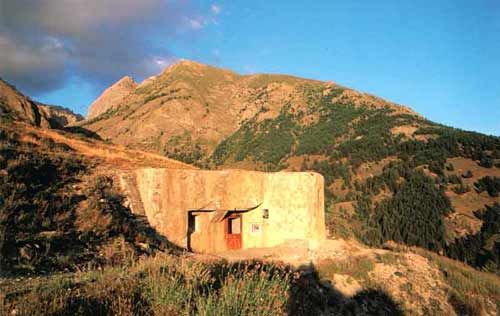
A blockhouse at Mont-Ours. Source: guysylvain.chez.tiscali.fr
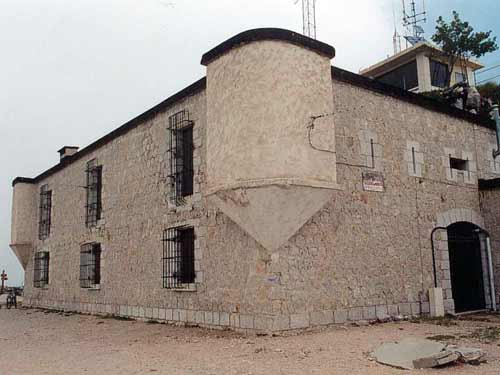
View of the Fort du Mont-Ours. Source: Fortweb.net


